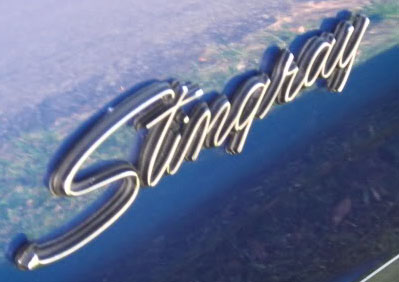Corvette Stingray Overview
 |
The Chevrolet Corvette C3 was launched in 1968 and the sleek new body style was based on the 1965 Mako Shark II Concept. By 1968 the Chevrolet Corvette had become a mainstay in the American performance car market but the introduction of the C3 Corvette rocketed the Chevrolet sports car to stardom. Running from 168 through 1982, the C3 was the longest generation of the Corvette, offering the highest and the lowest powered models in the car’s storied history. When introduced in 1968, the Corvette did not wear the Stingray name although General Motors used ?Stingray? in their advertising campaigns. They fixed this in 1969 when Stingray badged were added to the fenders of the Corvette and that name would be associated with the Corvette through the generation. |
When the C3 Corvette hit the market, the American horsepower war was in full swing and the C3 was a key player. The base engine was a 327 cubic inch V8 making 300hp and an addition 327 was available with 350hp. There was also a pair of big block 427s offering either 390hp or 400hp when equipped with the Tri-Power intake setup. The horsepower numbers were lower than many of the top of the line muscle cars of the day but the fiberglass structure of the Corvette and aerodynamic body gave the C3 an advantage over many of its competitors.
In 1969, the C3 Corvette saw the introduction of Chevrolet’s new 350 cubic inch V8 to replace the 327 but more importantly, the ZL1 engine package was offered. The ZL1 engine package used an aluminum 427 cubic inch engine block and cylinder heads along with a spread of other race-designed options and the ZL1 equipped Corvette C3 was stated to make 430 horsepower. In reality, the ZL1 Corvette was closer to 550 horsepower ? making it the most powerful Corvette built until the 2009 Corvette ZR1 hit the market. Sadly, due to the fact that the ZL1 option was about a 100% increase in price over a base C3 Corvette, only 2 were produced and sold by GM.
The power seemingly took a dive in 1972 and while many people blamed new engine emission requirements, the bigger factor was the newly required ?SAE? engine power measurement system. The actual power output of the same engines from 1971 to 1972 didn’t change; they were just stated differently to show the true output of the engine.
As the C3 Corvette continued to flourish, growing efficiency concerns forced GM to gradually add modifications that hurt the power of the Corvette’s engines and by the late 70s, the big block engines were gone and the small blocks offered under 200 horsepower. The good news was that the entire market was hit by the same emission and efficiency concerns so when the Corvette was at its lowest, it still was one of the faster cars available in the United States.
The amazing longevity of the C3 Corvette’s production run and the rabid popularity of the 3rd generation Corvette has made these models very common among collectors, making some of them among the least expensive of the vintage Corvettes. At the same time, models like the 1969 ZL1 Corvettes and the 1970 ZR1 are among the most sought after models in the history of the Chevrolet Corvette.
